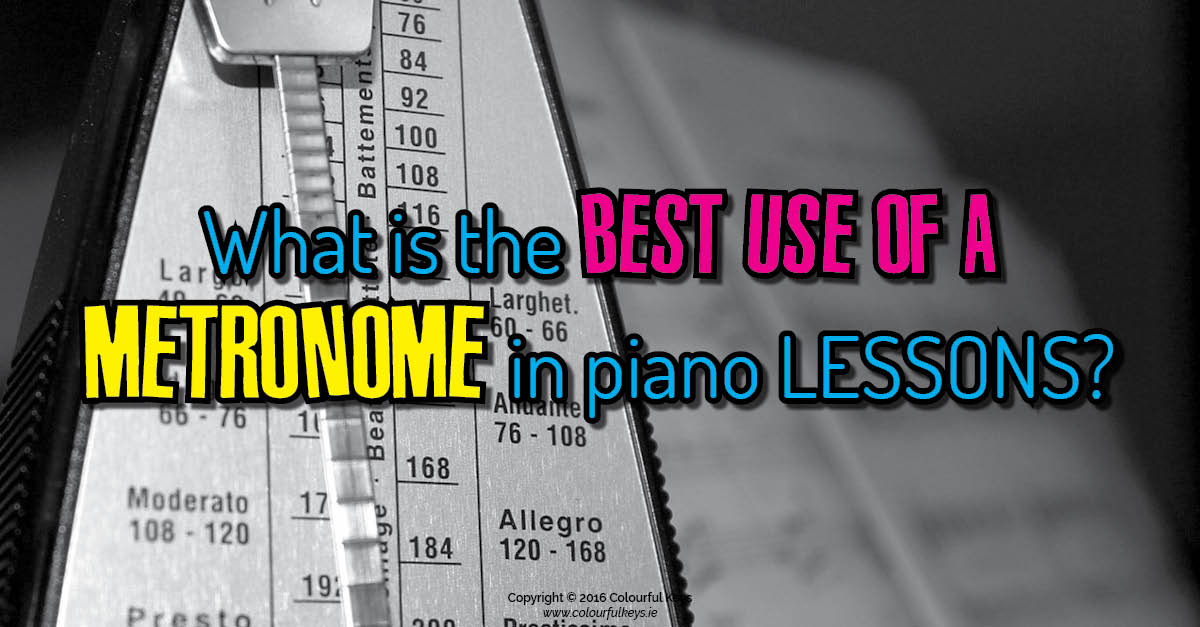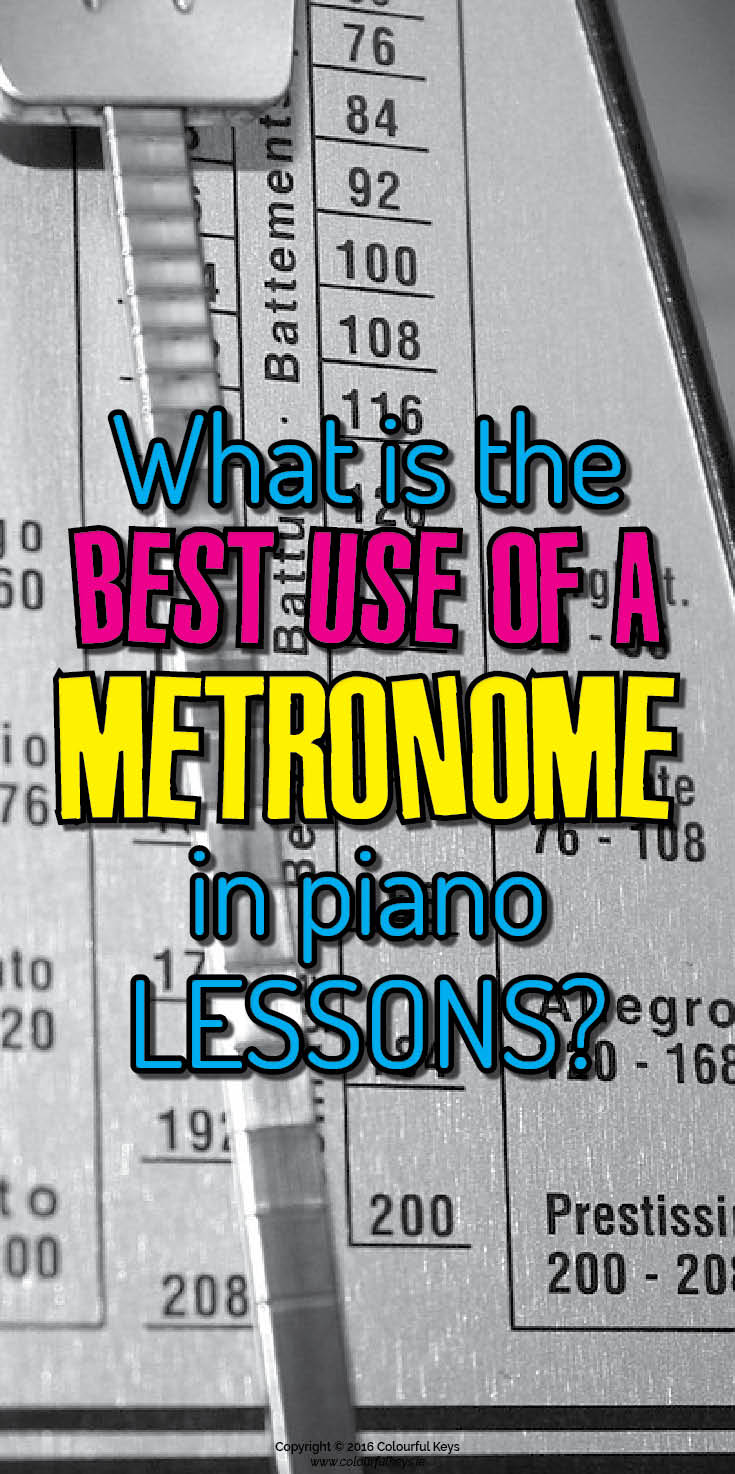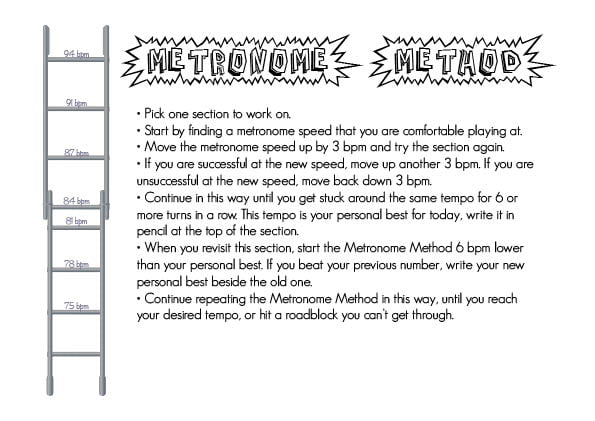My first teacher was completely against metronomes. She literally never used them in her teaching, and therefore I never used a metronome in my practice…which I think was a big mistake.

I don’t love metronomes, and I definitely think they are sometimes over used, but they are definitely a useful tool that every student should be able to use.
My metronome of choice currently is the iPad app Practice+ (find my other favourite iPad apps here) it’s completely customisable with great graphics.
The number one reason I find myself prescribing the metronome to students, is actually not uneven tempo. Most of my students play with even tempo, and if they are stopping and starting a lot I tend to find another solution for that, such as playing with backing tracks or duets.
The main reason I will reach for the metronome in my own and my students practice, is to speed up. This is the easiest way to get a piece up to speed, because you can go up in almost imperceptible increments.
3 more beats per minute really doesn’t feel like anything, but bit-by-bit you can make your way up to the performance tempo. I always recommend going a bit above the performance tempo, so that you are really choosing to play at that tempo, not just playing as fast as you can.
(Click on the image to download the pdf.)
How much do you use the metronome in your teaching?
Do you have a different favourite use for the metronome? Or another favourite method of speeding a piece up? Please share in the comments below!
For more ways to get students to practice smarter, try these practice step stickers. These are a simple, fun and effective to improve piano practice quality.


I just decided last week that I’ll use the “tick-tock machine” starting with the first lesson, so students will think it’s a normal part of the lessons and won’t balk when they’re older and have to use it.
What a great idea! No reason to delay these things and make them seem “scary” 😉
Ozan Marsh taught a version of this method in his technique class at Chautauqua for many years, starting about 30 “notches” below the desired final tempo. It really helped students to focus, and, as you say, it made reaching up to performance tempo seem almost imperceptible.